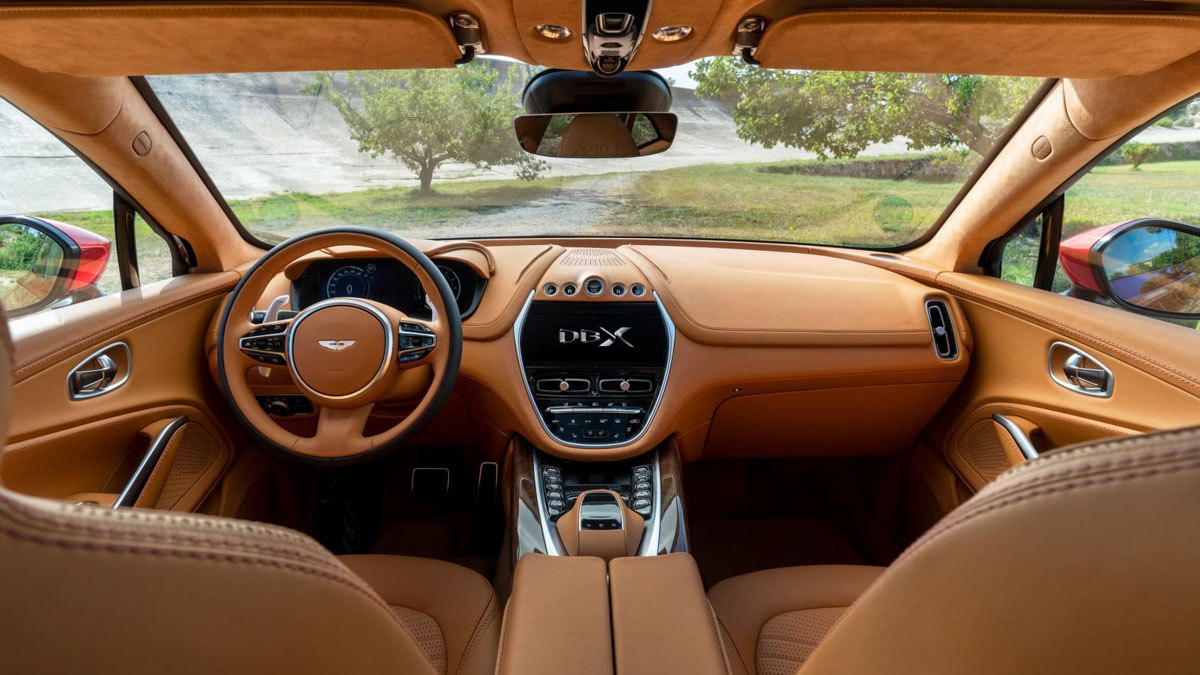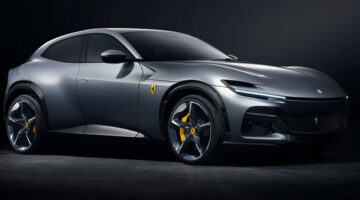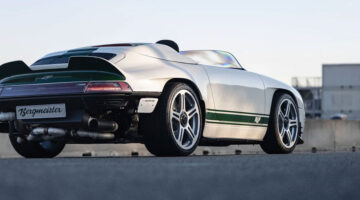It might be late to the party, but has Aston Martin’s first ever SUV nailed the brief?
Is it possible to overstate the importance of the DBX to Aston Martin’s future? Unlikely. Late to the premium-performance SUV party, the DBX is the car Aston Martin needs to fly out of its vast new production facility in south Wales, not only to get customers through the doors but to secure the next round of investment to pay for the Vanquish and Valhalla mid-engined supercars. And CEO Andy Palmer would probably appreciate some respite from the hounds that hunt in packs from the financial press.
Anyway, this is a prototype DBX (1PT in Aston Martin speak, with two additional stages to go before Job 1 is signed off and production starts in earnest in April) and we’ve driven it on and off road in the winter heat of Oman with Aston Martin’s chief of engineering, Matt Becker, as our wingman.
We’ve a few reservations regarding the DBX. Primarily we’re not huge fans of cars that call themselves performance SUVs, the phrase sitting rather uncomfortably in our world. Why? Because the idea of a performance car that weighs the wrong side of two tons and has a centre of gravity high enough to give an Alpine A110 vertigo is a flawed concept in our eyes. These behemoths are powerful, yes, and they are fast, but performance cars you can enjoy? Less so.
Aston Martin gets this too and has been conscious of the reaction behind its decision since it first confirmed, revealed and has now allowed a few people to drive its entry into this congested market. But given 72 per cent of today’s Aston Martin owners currently also own an SUV, the business case is a logical one. And as Porsche declared when it announced it would build the Cayenne before the last millennium ended, it would rather its customers were paying money to it for such a car rather than to a competitor.
This, then, is a landmark car for Aston Martin. Just as the Vantage was in 2006 and the DB7 in 1994. The difference being this is like no other Aston Martin that has gone before.
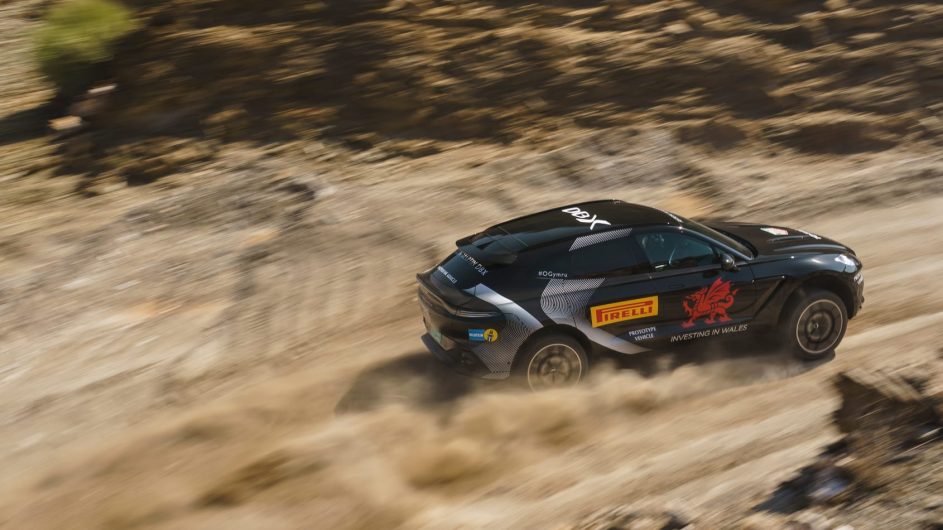
Engine, Gearbox and 0-100kph
Mercedes-AMG’s 4-litre hot-V twin-turbo V8 will be the first engine offered with the DBX, although it’s been future-proofed for a variety of motors, including electric ones. The bare numbers are 542bhp and 516lb ft of torque, and while AMG hasn’t developed a bespoke engine for Aston, nor the British outfit set about the Affalterbach engine itself, the Gaydon engineers have developed a new exhaust system to provide the DBX with its own distinctive tone and sound.
At the heart of the four-wheel-drive system is a nine-speed torque converter automatic gearbox, the first time Aston Martin has used Mercedes’ nine-speed unit. Mounted to the back of the engine, drive is sent to the rear wheels via a carbonfibre propshaft.
Performance is brisk despite the DBX’s bulk. Zero to 100kph arrives in 4.3sec, with the top speed pinned to 291kph, which is plenty for something weighing as much as it does. If you’re lucky you might see 14.1L/100km, but closer to 18.8L/100km is most likely.
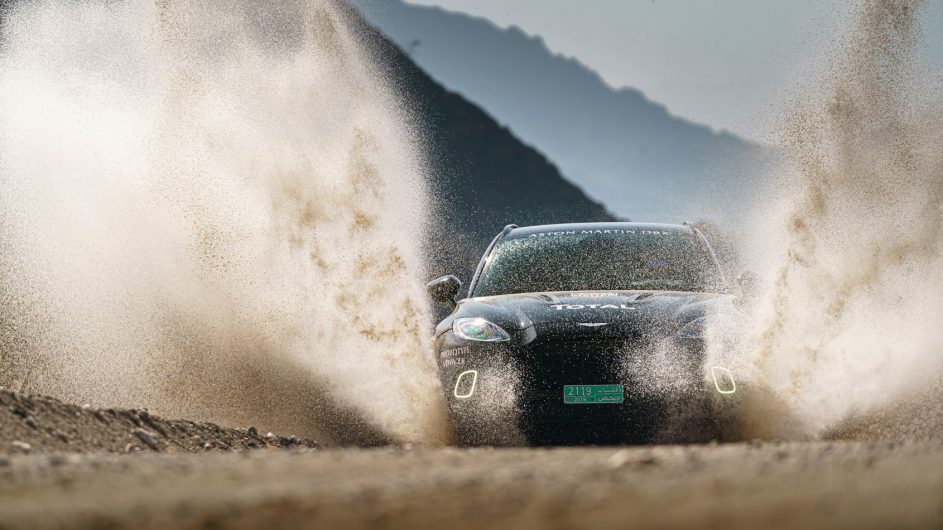
Technical Highlights
There was no starting point for the DBX, so between them Marek Reichman and Matt Becker shared a clean sheet of paper to come up with the blueprint for Aston’s first SUV. ‘We had no need to share a platform or adapt an existing architecture,’ explains Reichman, Aston Martin’s chief creative officer. ‘Which gave us great freedom to determine footprint, wheelbase lengths and overhangs. How high we wanted the roofline to be, how big or small a glass area we wanted. We made every decision to suit us and the customers who we have spoken to along the way.’
By not coming from within a larger group of brands that strive to build individual and distinct vehicles from a shared pool of common components, Aston Martin has been able to produce the car it wanted rather than a close approximation to suit the sum of parts available to it.
That starting point was a platform designed specifically for the DBX of today with an eye to the future. It’s incredibly stiff, which helped chief vehicle engineer Becker spend more time fine-tuning and honing the car’s dynamics rather than trying to mask the problems associated with a platform designed for multiple disciplines operated across a much wider bandwidth.
As well as the stiffness, the DBX’s core also had to be strong, which has resulted in a portly 2245kg kerb weight, but the technology installed is, claims Aston Martin, designed specifically to mask that heft and deliver a driving experience you’d immediately recognise as one honed in Gaydon.
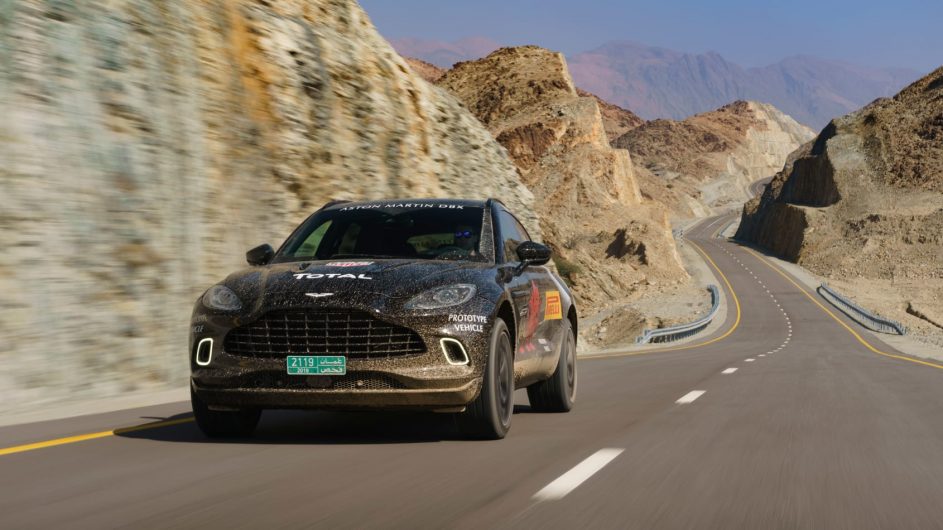
There’s double-wishbone front suspension and a multi-link rear set-up, and included within the former is hydro-bush technology to reduce noise and improve refinement. There is also a three-chamber air-suspension system to Aston’s own design and specification, whilst Bilstein has developed a unique set of adjustable dampers for the car, too. A 48V electrical system has allowed the use of active anti-roll bars capable of putting 1032lb ft of torque through the system, resulting in the DBX generating less roll than a Vantage.
Within the four-wheel-drive system, which can send 100 per cent of the drive to the rear wheels and up to 47 per cent to the front, there’s a central-mounted active e-differential with an e-diff in the rear axle. The front drive relies on torque vectoring to manage the loads.
Five driving modes will be provided: GT, Sport, Sport+, Terrain and Terrain+. The two Sport modes lower the ride height by 15mm respectively (in Sport+ mode the DBX sits 30mm lower than in GT mode), and in Terrain modes the car raises its ride hight by 25 and 45mm respectively over GT mode.
Two 22-inch wheel designs will be offered at launch, with bespoke Pirelli P Zero tyres including an All Season and a winter tyre option also offered. Tyre sizes are split front to rear (285/40 and 325/35) to prevent turn-in oversteer and improve the handling balance. Steel brakes measuring 410mm at the front and 390mm at the rear are clamped by six-piston calipers.
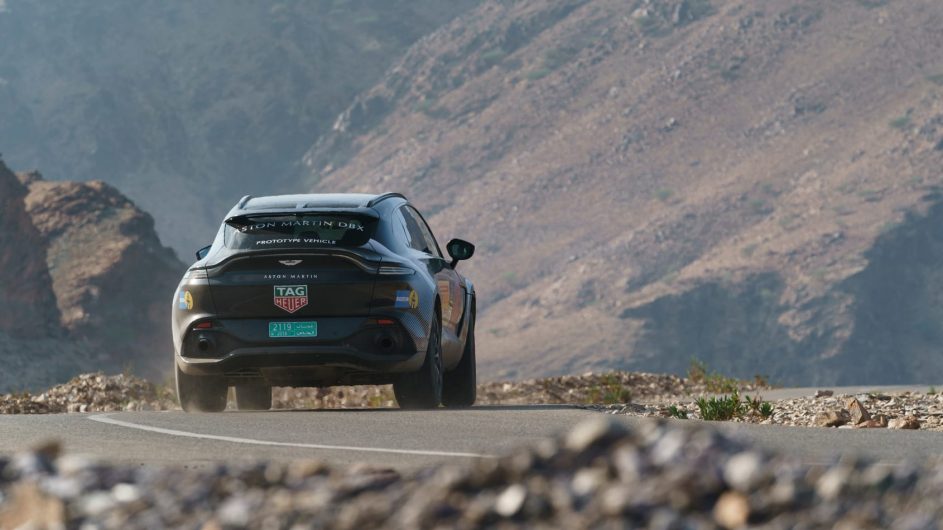
Becker says the target was to produce an SUV that sat between a Porsche Cayenne and Lamborghini Urus in terms of performance. ‘Our steering isn’t as quick as that of a Cayenne [14.4:1 compared to 12.5:1] because we wanted to maintain a linear steering input, as you would expect from a sports car.
‘We couldn’t just make it behave like an Aston Martin sports car, though. We also had to make sure it could do everything that is expected of these vehicles. Regardless of what you think of SUVs, what you can make these machines do is hugely impressive. I’ve been shocked at some of the things it’s capable of.’
What’s it like to drive
Unlike any performance SUV you may have experienced, one that outperforms every rival you care to mention. It’s more dynamic than a X5/6 M, a car Matt Becker and his team specifically benchmarked the DBX against for handling balance. It’s more resolved and natural in how it flows down a road making a Cayenne feel flat-footed and one-dimensional. It has a Urus licked for high-speed thrills, ripping along at a feral pace when you want it to. Yes, a Urus will always be ahead, but only in a straight line, because the DBX can carry more corner speed than the Italian, and any other pretender for that matter.
Despite the steering on this prototype having the correct ratio, Becker explained there is still some work to do when it comes to feel. But on this outing you could position the DBX precisely where you needed it to be in the corner, eliminating that ‘turn in and hope’ approach other cars of this ilk require you to do. You drive it through a corner rather than just hold on and hope. There’s an unexpected linearity to the steering and it always remains calm between your fingertips but is able to get the DBX’s front axle turned in with a crispness and precision that’s more sports saloon than SUV.
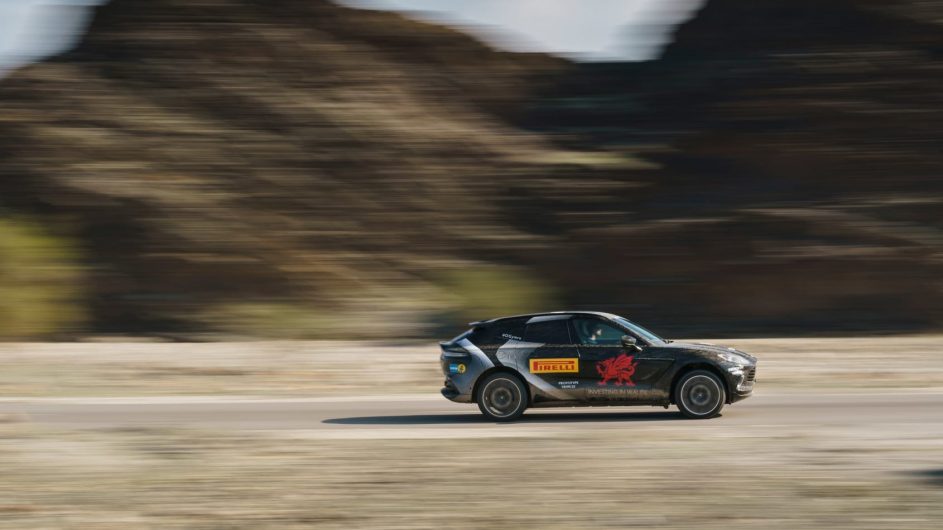
Grip levels are hard to judge on dusty Oman roads, but the Pirelli P Zero tyres that Becker pushed the Italian rubber specialist to develop to near Corsa levels of performance cut through to provide a clean purchase, and no matter how hard they are pushed in the high temperatures they don’t complain. And this prototype is running the all-season tyre, which Aston expects the majority of customers to specify.
Body roll is only noticeable in slower, tighter turns, but even then it moves as one rather than lurching port to starboard. At higher speeds there is less body roll than in a Vantage, a claim Aston made at the car’s reveal but which sounded questionable at the time. It’s not.
It’s the same for the brakes, which are stronger and more powerful than those fitted to the DBS. They have a level of modulation that’s totally unexpected from this sector, too. All performance SUVs have mammoth brakes but few allow any finesse and are designed purely to bring the hulking mass to a halt. In the DBX they allow you to brake as you would in a supersaloon, managing the retardation as you bleed the car around the obstacle.
The supersaloon comparison extends beyond the brakes, however, because genuinely the DBX is not only the first SUV that can credibly call itself a performance car, but it’s one that on this brief drive demonstrates a level of ability and agility to go toe to toe with the likes of an E63 estate and RS6, or more traditional GT cars. It even has estate car levels of interior space and comfort as opposed to the SUV norm of being a reverse Tardis. You also ‘sit in’ the DBX rather than on it, the cockpit wrapping around you, the driving position on a par with a Bentley Continental GT’s.
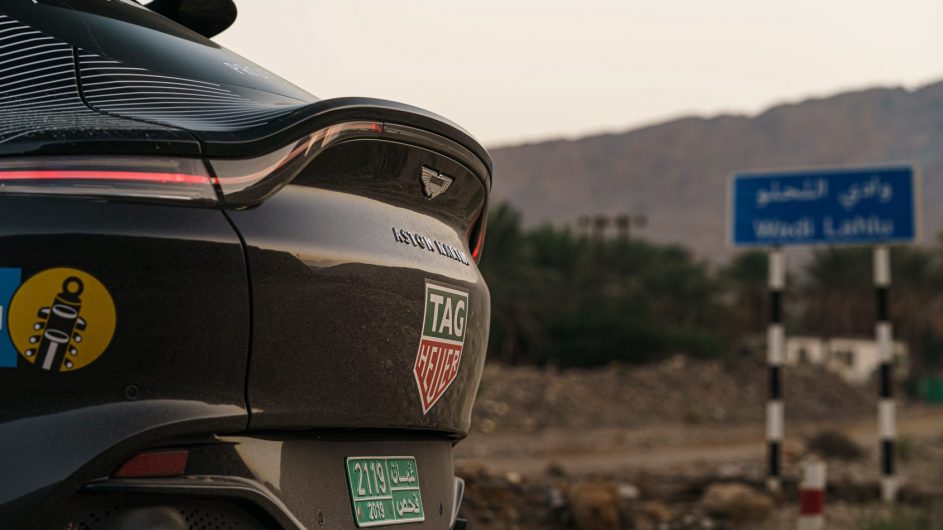
And of course, it’s quick, because even at two tons the AMG-sourced V8 has enough guts and brute force to punch a car the size and weight of a DBX into next week. Crucially, the powertrain feels a cohesive element to the package, in sync with the car’s unique platform and chassis it has allowed Becker to develop. On this experience it feels better and more resolved than any AMG product that also competes in this sector. Which must make for some interesting conversations in Affalterbach.
Negatives? Despite its agility and how it engages the driver, and the magic worked by both Becker and his engineers and the accompanying software gurus, it’s still too heavy for a performance car, and when we have the opportunity to spend more time with the DBX later this year, on more demanding roads, I think that mass could be hard to mask. But then again, a tight, challenging B-road will not be the DBX’s natural habit.
On this early drive credit needs to go to Aston Martin for what it has achieved, which is the first credible performance SUV. It’s a new rival to the established superwagons and has the potential to make every other performance SUV look irrelevant and a little bit silly.
Price and rivals
Some $206,000 opens the bidding for an Aston Martin DBX, which is strong money against the $178,880 Bentley Bentayga V8, but on a par with Lamborghini’s Urus at $209,000. Porsche’s Cayenne Coupe Turbo rocks up at $136,840. BMW’s X6M, the Range Rover Velar SVA and Mercedes GLE 63 Coupe are similar money to the Porsche.
First deliveries are scheduled for early summer 2020.
This article originally appeared at evo.co.uk
Copyright © evo UK, Dennis Publishing

